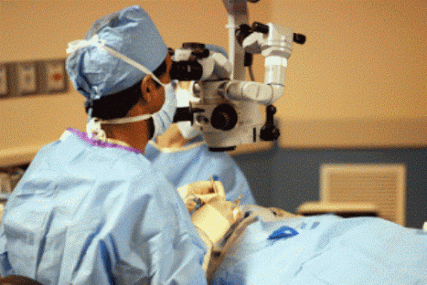 The eye is really like a camera. A cataract is a messy lens. The Cataract Surgery evacuates the messy lens and replaces it with a man made insert (a bionic eye as one of my patients puts it). A cataract is an obscurity that clouds the characteristic lens inside the eye. Ordinarily the way of light to the retina (where the light sensors are) is as clear as could reasonably be expected. At the point when proteins that makes up the lens cluster together, the subsequent cataract hinders a percentage of the light, making vision foggy or cloudy.
The eye is really like a camera. A cataract is a messy lens. The Cataract Surgery evacuates the messy lens and replaces it with a man made insert (a bionic eye as one of my patients puts it). A cataract is an obscurity that clouds the characteristic lens inside the eye. Ordinarily the way of light to the retina (where the light sensors are) is as clear as could reasonably be expected. At the point when proteins that makes up the lens cluster together, the subsequent cataract hinders a percentage of the light, making vision foggy or cloudy.
Cataract surgery is an extremely basic method, and confusions (if any) are uncommon and treatable. The surgery itself is profoundly successful in enhancing the vision of patients around 95% of the time. Cataract surgery is an outpatient methodology generally taking under 30 minutes to finish.
During the Cataract Surgery
During the surgery, the Eye Surgeon expels the shady normal lens from the eye while the patient is under a topical anesthesia. Next, the specialist embeds an intraocular lens (IOL), which remains for all time set up of the evacuated regular lens. The IOL adjusts for the amplification the old lens gave. Cutting edge IOLs are intended for different capacities and made out of diverse materials; your specialist will know which is most proper for your individual case. After the operation the specialist will apply a shield for the eye and give you eye drops to use as coordinated.
Cataract surgery is a two-stage strategy—first the Cataract Surgeon removes your overcast lens, and second, another lens insert is embedded into your eye. The overcast lens is evacuated with a modest instrument that enters your eye through a little entry point—normally one-eighth of an inch or littler—and tenderly breaks the cataract into minor pieces that are then expelled from the eye with a smaller than usual vacuum more.
Once the cataract is out, you will require another lens with a specific end goal to concentrate after surgery. Manufactured lens inserts—made of plastic-like materials—are utilized to restore your capacity to concentrate after surgery. These inserts come in a wide range of qualities, similar to glasses, and before your cataract operation, your Eye Doctor will perform a few estimations to focus the proper lens insert quality for your
Cataract Symptoms are:-
- Blurry vision.
- Lights appear to be too brilliant or have a “radiance” impact.
- Double vision in one eye.
- Decreased night vision – affectability to glare from headlights.
- Dull or blurring colors.
- Frequent changes in eye glass or contact lens solution
Recovery from Cataract Surgery:-
The patient may return home the day of the method. With fitting rest and avoidance of any strenuous exercises, for example, truly difficult work, recuperation is normally a matter of days, with just minor distress. A few subsequent arrangements will be obliged to guarantee the eye is mending appropriately and beginning results are maintained.